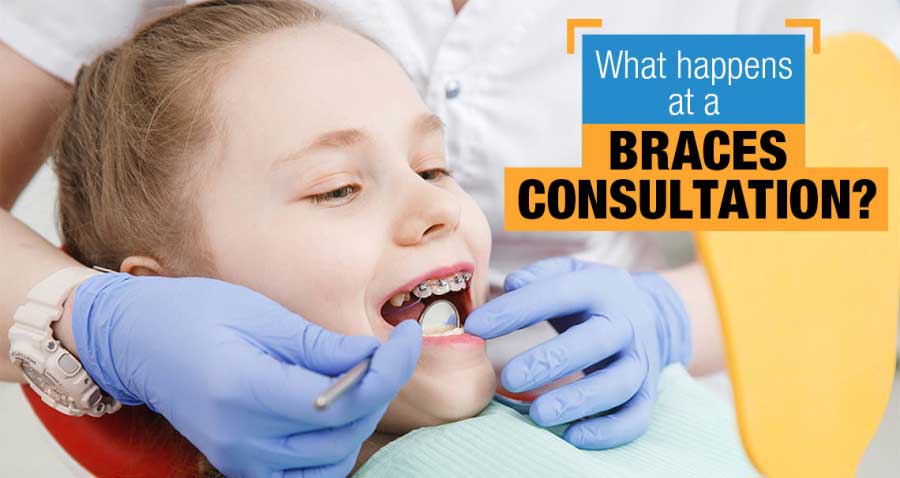Comprehensive Guide to Orthodontics Treatments for Dealing With Dental Misalignments
Comprehending the intricacies of each procedure, including their mechanisms, advantages, and potential drawbacks, is critical in making informed decisions about one's orthodontic treatment. As we browse via the detailed guide to orthodontic procedures for correcting oral misalignments, the elaborate details of each approach will certainly unfold, shedding light on the course toward a harmonious and useful oral placement.
Orthodontic Procedures Introduction

Regular adjustments and tracking are vital components of orthodontic therapy to make certain progress is on track and to make any necessary modifications along the way. By going through orthodontic procedures, clients can not only accomplish a straighter smile however likewise enhance their general oral health and wellness and function.
Standard Dental Braces: Exactly How They Work
When considering orthodontic therapies for oral misalignments, typical braces stand out as a tried and true approach for fixing teeth placing. Traditional braces are composed of braces, wires, and bands that work with each other to use continuous pressure on the teeth, progressively relocating them into the preferred placement.
As stress is used to the teeth with the dental braces, the bone bordering the teeth is reshaped to support the new tooth settings. Clients will need regular adjustments at the orthodontist's office to ensure the dental braces continue to apply the correct pressure for reliable teeth activity.
Unseen Aligners: Disadvantages and pros
Unseen aligners supply a very discreet and practical alternative to traditional dental braces for dealing with oral misalignments. These clear, customized trays are practically unnoticeable when worn, making them an enticing alternative for individuals seeking an extra cosmetically pleasing orthodontic treatment. One of the key benefits of undetectable aligners is their removability, enabling for easier upkeep of dental hygiene contrasted to standard braces. Patients can get rid of the aligners before eating or cleaning their teeth, decreasing the danger of food obtaining stuck in the device and streamlining the cleansing procedure.

Surgical Orthodontic Options
Surgical treatments in orthodontics existing feasible alternatives for resolving intricate oral imbalances that might not be properly settled via standard orthodontic therapies. While undetectable aligners and standard dental braces can remedy lots of orthodontic problems, particular situations need medical treatment to achieve optimal outcomes. Surgical orthodontic options are why not try these out usually suggested for serious malocclusions, substantial jaw discrepancies, and cases where the underlying bone structure requires modification to attain proper placement.
One usual surgical orthodontic treatment is orthognathic surgical procedure, which includes repositioning the jaws to deal with useful problems such as trouble talking or chewing. This surgical procedure is usually done in collaboration with an orthodontist that assists straighten the teeth prior to and after the procedure. Surgical orthodontics might also include procedures to subject impacted teeth, get rid of excess gum cells, or reshape the jawbone to produce a more unified face profile.
Prior to thinking about medical orthodontic options, people undergo a thorough assessment to establish the requirement and possible benefits of such interventions. cumming invisalign. While surgical treatment might appear overwhelming, it can considerably boost both the feature and looks of the smile in cases where traditional orthodontic therapies drop short
Retainers and Post-Treatment Care

Failing to conform with post-treatment care directions can result in relapse, where the teeth gradually relocate back in the direction of their initial settings. Consistent retainer wear, good dental health, and routine dental check-ups are important for maintaining the outcomes accomplished with orthodontic surgery and ensuring the lasting security of the remedied dental placement.
Verdict
To conclude, orthodontic procedures offer numerous choices for fixing dental imbalances. Standard braces make use of metal brackets and cords to move teeth right into correct positioning. Invisible aligners provide an even more discreet choice however may about his not appropriate for all situations. Surgical orthodontic alternatives are readily available for much more extreme imbalances. Retainers are commonly made use of post-treatment to maintain the brand-new alignment. On the whole, orthodontic procedures can effectively enhance dental wellness and aesthetic look.
As we navigate with the comprehensive guide to orthodontic treatments for correcting dental misalignments, the detailed details of each technique will certainly unravel, shedding light on the web path towards a practical and unified oral alignment. - cumming orthodontist
One of the most usual orthodontic treatments is the use of braces, which consist of steel braces and cords that use gentle pressure to gradually move teeth right into the wanted placement.When considering orthodontic treatments for oral imbalances, standard dental braces stand out as a reliable method for dealing with teeth positioning. In addition, unnoticeable aligners may not be suitable for complicated orthodontic concerns that need even more significant teeth movement, as they are normally advised for light to modest instances. Retainers are personalized orthodontic tools designed to hold teeth in their fixed placements after the conclusion of orthodontic therapy.